Pizza as Self-Expression
Lately, I’ve been thinking about pizza as a form of self-expression.
On a recent holiday shopping expedition, I found myself fascinated by what are called Fine Art Galleries in the mall. I’m sure you’ve seen them, places that sell the mass-produced work of a particular “artist” who seems to be capable of turning out thousands of paintings at an alarming rate, each new one eerily similar to the last. Well, just as I was about to turn my nose up at this array of McArtwork, I looked across the aisle and noticed a food court that housed the standard chain outlets including, of course, pizza. There, on an illuminated display, I spied a huge number of mass-produced pizzas, each new one eerily similar to the last. I realized that in pizza, just as in fine art, there are different goals that can tell us quite a bit about the maker, and the consumer as well. Trying (with little success) not to make any value judgments, I’ve identified three distinct types of pizza-makers.
The first types are what we might call CPA’s: Certified Pizza Assemblers. The CPA has been carefully trained to mass produce identical pizzas according to a template that is designed with one goal, profit. Don’t get me wrong, an assembler may be highly skilled in the mechanics of cranking out a huge quantity of pizzas. However, the pies themselves must conform to a corporate ideal. In no way should the individual hand of the pizza-maker show through in the finished product. In many cases, the CPA’s will have only a rudimentary understanding of the true nature of the ingredients, equipment, and techniques that they are using. In truth, the pizza assembler is sort of making pies phonetically. The end result may appear correct, but it lacks meaning. I have to admit I get a bit depressed when I see those sad Stepford Pies lined up on display, each one denied any personal connection to its maker. Most of the pizza-makers at your local chain pizza shop are CPA’s, and many pizza makers at independent pizzerias are also CPA’s. They simply mimic the methods they have been taught, with no real understanding; they know the how but not the why.
At the next level, we have what I call the PC: Pizza Craftsman. The PC has learned and polished all of the tools of the trade. He or she understands the origin and nature of the ingredients, the capabilities, and maintenance of the tools, and is highly skilled in the various techniques of the pizza-maker’s trade. The skilled craftsman will collaborate with the customer and utilize all of those elements to bring to realization the customer’s vision of a perfect pizza. We can think of the pizza craftsman as being similar to a master carpenter, who is commissioned by a patron to build a set of custom cabinets. The finished work will tell us quite a bit about the maker, but it is influenced by commercial considerations and the preferences of the client. I would consider myself an example of this level. For me, the joy of pizza-making is in learning about my guests and using my skills to bring their vision to reality.
At the third, and arguably the highest level, are the TA’s: True Artists. For the true pizza artist, the pie is a medium for the expression of the personality, values and soul of its maker. An artist will give almost no consideration to commercial viability beyond funding the continued quest to produce art. A real pizza artist (and they are very rare) is compelled to create pizza in answer to an inner voice or ideal. On occasion someone such as a Chris Bianco will find a following of people who “get it,” and they can meet with financial success. More often, though, they labor on as long as possible, at best just getting by. Several years ago I spoke with Anthony Mangieri at the now shuttered Una Pizza Napolitano in Greenwich Village, before he reopened it in San Francisco. He told me, “I don’t know if I can make any money like this, but this is my pizza, I have to do it this way.” There is the heart of it; the TA’s are compelled to listen to that inner voice and express themselves through their pizza, public opinion be damned. Sure, Van Gogh could have made some money producing conventional portraits and landscapes, but he simply could not go that route. The result was legacy rather than currency. He created art that reflected his soul and, as a result, he will be remembered forever.
For each of us, pizza making is a personal quest. We have to decide for ourselves which level suits our objectives and most importantly our personalities. Over time we evolve, change and hopefully grow, but at each stage, we should consider that our approach can be a wonderful way to tell the world who we are.
John Arena (Part I of II)
Recent Articles by John Arena
Comments
Add Comment
You must be logged in to post a comment.



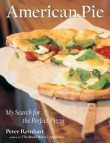
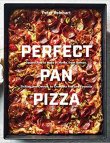
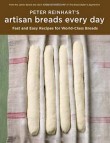


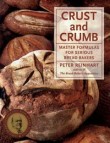
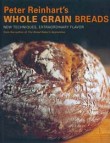
John,
Your article would seem to me to be the difference between a practical and a passionate approach to making pizza. The PC’s and the TA’s can both be of the passionate variety. One is focused on his customers and the other is determined to create something unique and wonderful. Not at all a bad thing.
mren50
I like your article. I always found it so interesting how so many people can take the same ingredients but yet make a pizza unique to themselves. I have been in the industry for twenty years and have trained hundreds of people each one with there own signature, amazing. But myself i do believe its an expression of art. When I make pizza I make it to communicate, not just visual but every thing about it! The art of pizza is what I call it as well, you can really put your soul into it! Have a great day Scot Cosentino Founder Goodfella’s Pizza Staten island New York